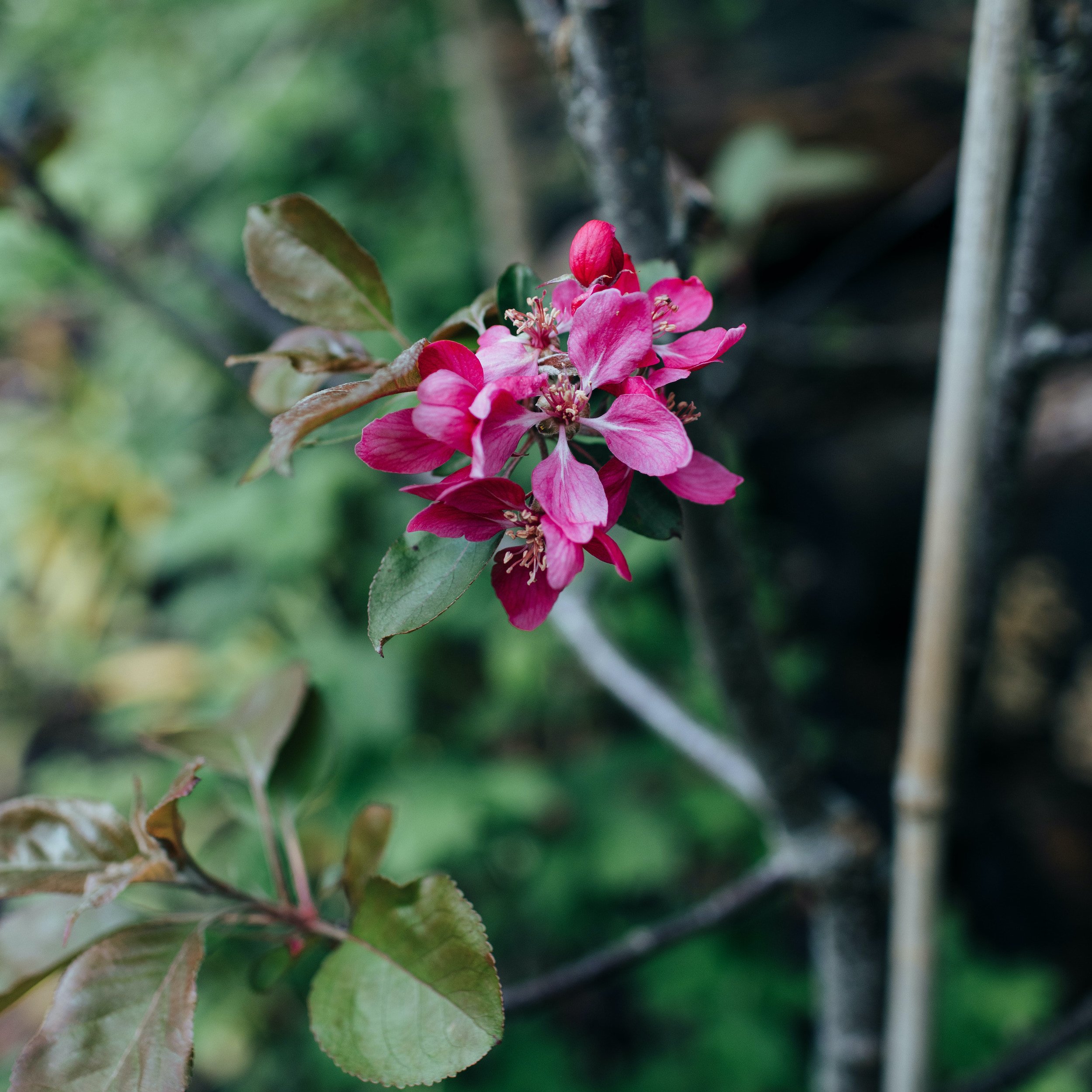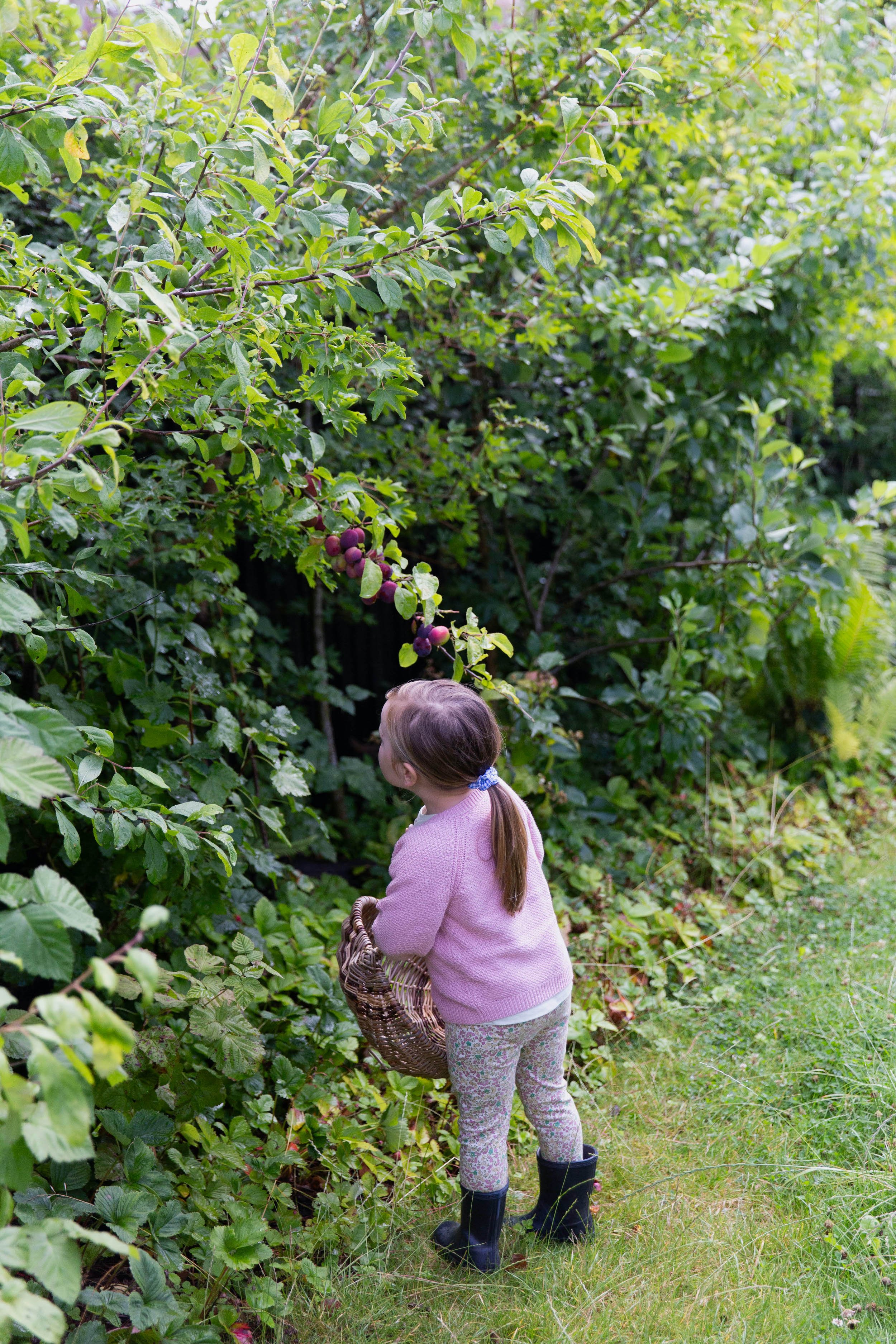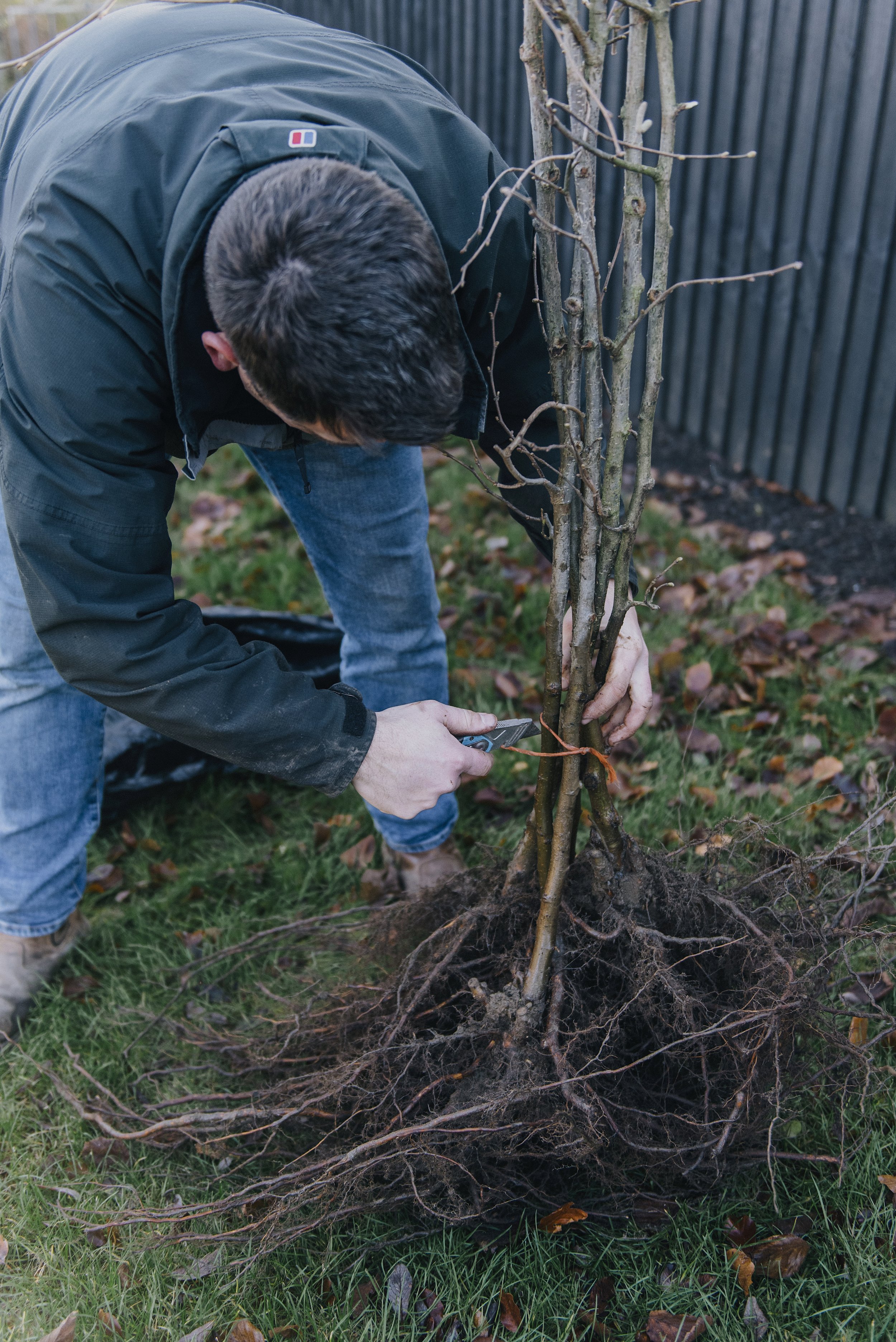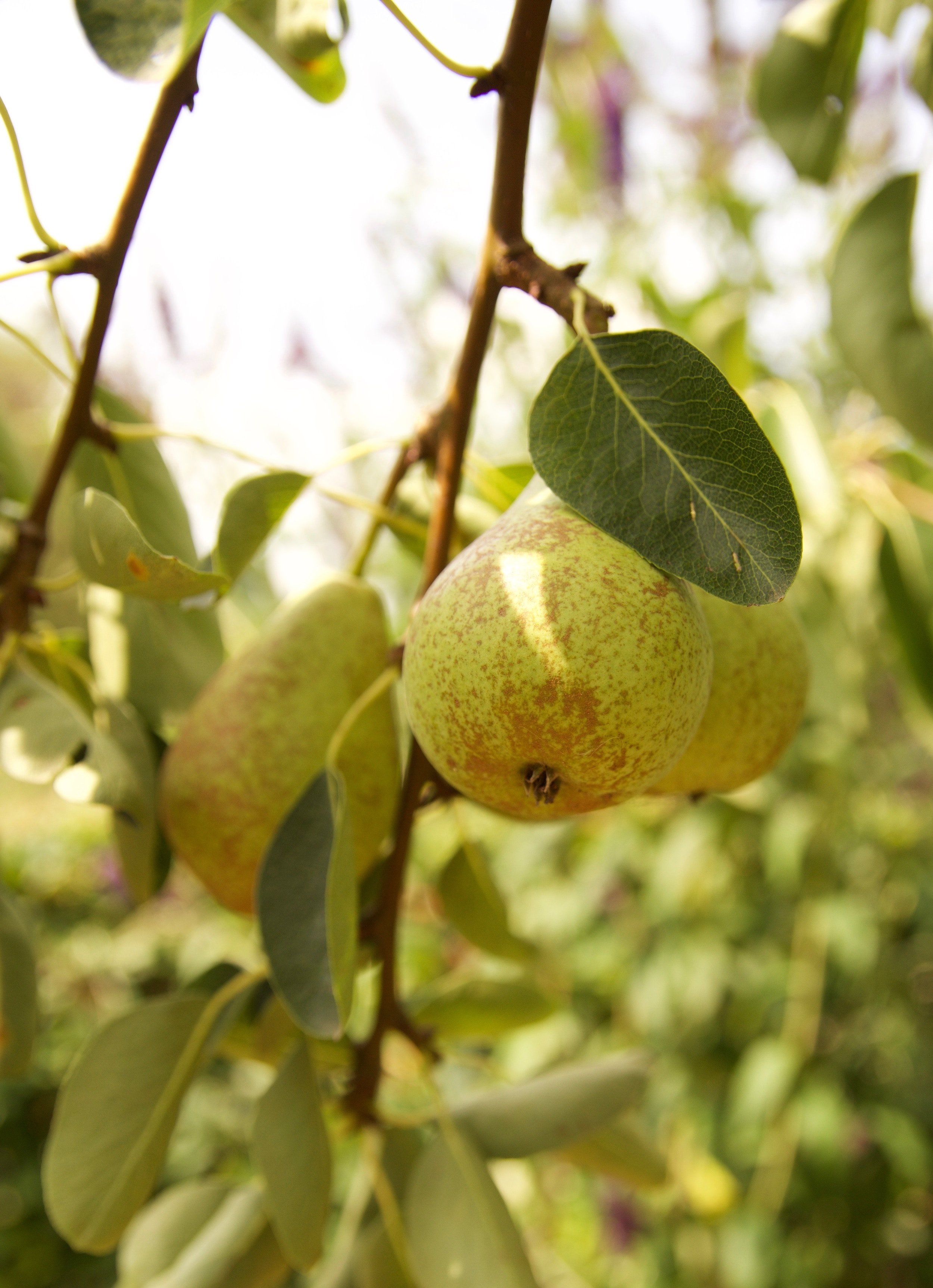Plant guide: apple trees
There are few things more satisfying than eating fresh fruit and veg, grown in your own garden – and an apple tree or two that provide a bounty of fruit in Autumn is one of our very favourite ways to do this!
Apple trees come in all shapes and sizes, from large trees that would look good in the middle of a lawn, to smaller varieties that can be grown in pots on a patio. Whatever space you have available, there will be a spot somewhere to squeeze in an apple tree! And it’s a fruit tree worth including – not just for the fruits in the Autumn, but also for the Spring blossom (an important source of nectar for pollinators) and the twisted bare branches that can provide a focal point in the Winter months.
Botanical name: Malus domestica
Plant type: Deciduous fruit tree.
Growing conditions:
Apples grow best in full sunlight, which helps ensure the blossoms are easily pollinated, and the fruit ripens well. They prefer a slightly sheltered spot in fertile, free draining soil.
The majority of apple varieties need cross pollination in order to bear fruit – in brief, this just means that apple trees should be planted alongside other varieties of apple, or crabapple. Aim for trees that will be in blossom at the same time (apple varieties are divided into pollination groups, to make this easy, so choose trees from the same group.) This means that the bees can spread pollen between the two different trees. There are a few cultivars which are self-pollinating, meaning they will bear fruit without being planted close to another tree (‘James Grieve’ is a good example) however, even these tend to perform better if they are cross-pollinated. So, when you’re planning a spot to plant a new apple tree, make sure there is space for two or more different cultivars relatively close to each other. This could mean anything from a full blown orchard, to a line of cordoned trees, a stepover hedge, or something wilder, such as our edible hedge of fruit trees.
How to plant:
We prefer to plant bare root trees into open ground. This is the cheapest way to buy fruit trees, and it’s one of the best ways to get trees established in the ground. Buying bare root trees also gives the biggest choice of cultivars, with a huge range of different options available, compared to buying trees grown in containers at different times of year.
Bare root trees are available from nurseries in the dormant months (Autumn and Winter) and can be planted any time during this period, as long as the ground isn’t waterlogged or frozen.
Dig a hole in the area you want to plant the tree, as deep as the roots and a little bit wider. The tree needs to be planted to the same depth that it was previously growing – you can usually see a soil line at the very bottom of the trunk, just above the swelling where the roots start.
All but the smallest trees will need to be staked for the first year or two. Position the stake in the ground before planting the tree, to avoid root damage, and tie carefully with tree stakes afterwards.
It helps to have two people, so one can hold the tree steady in place, ensuring it stays upright at the right height, while the other backfills the hole. Gently tamp down the earth around the tree, being careful not to compact the earth too much. For more detailed information on planting, see our guide to planting bare root trees.
Grow with:
Apple trees can fit into almost any garden and any size and style! You can grow a whole orchard of apple trees on their own, if you have the space, or just add them in to a normal border in a garden, to provide a focal point. We also love the apple trees growing in our edible hedge, which gives us plenty of produce, as well providing a boundary.
Care:
Once established, the apple trees will only need watering in any extremely dry spells while their fruits are growing. However, for the first few years, keep an eye on the trees and water in dry weather throughout the Summer as this will help to keep them healthy while they get established.
Keep the area around the base of the trees free from weeds, in order to prevent competition for water and nutrients.
Feed once a year in early Spring, with a high potassium fertiliser. Scatter the feed on the area around the tree trunks
A mulch around the base of the trees in early Spring, after feeding, will help to keep moisture in the soil and to supress weeds. Take care not to pile the mulch onto the trunks of the trees.
Check the stakes and tree ties periodically to make sure they’re still in place and working as they should. It’s especially important to check after any adverse weather, such as storms, to make sure they are still in place. Tree ties should be loosened if they start to encroach on the trunk. Tree stakes can be removed after two years.
Favourite varieties:
There is a dizzying array of apple cultivars available, and you can find trees in different sizes, flavours of apples, and even fruit colour. Trees are grown on rootstocks that influence their overall height, so opt for a dwarf or smaller tree for a smaller space.
By far our favourite variety for taste is the well-named ‘Scrumptious’ (absolutely true to its name!) which is a delicious eating apple. Other top choices for us are Bramley’s Seedling,’ a great cooking apple, ‘Discovery’ is a red-skinned dessert apple and ‘Cox’s Orange Pippin,’ another dessert apple, has reddy-orange skin and a sweet flavour.
The deep pink coloured blossom on Apple ‘Tickled Pink’…
…turns into a bright red apple, with flesh that matches its skin








